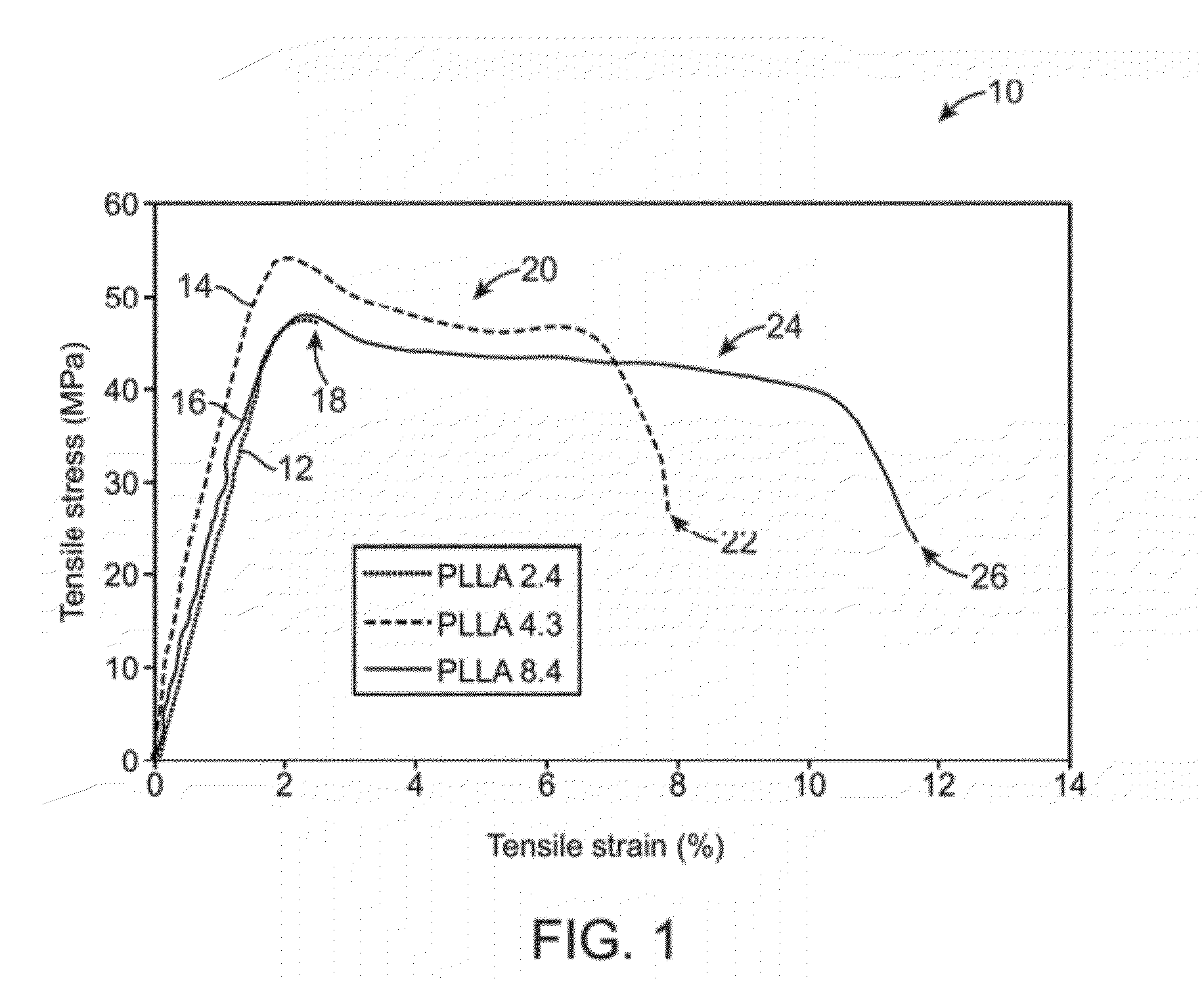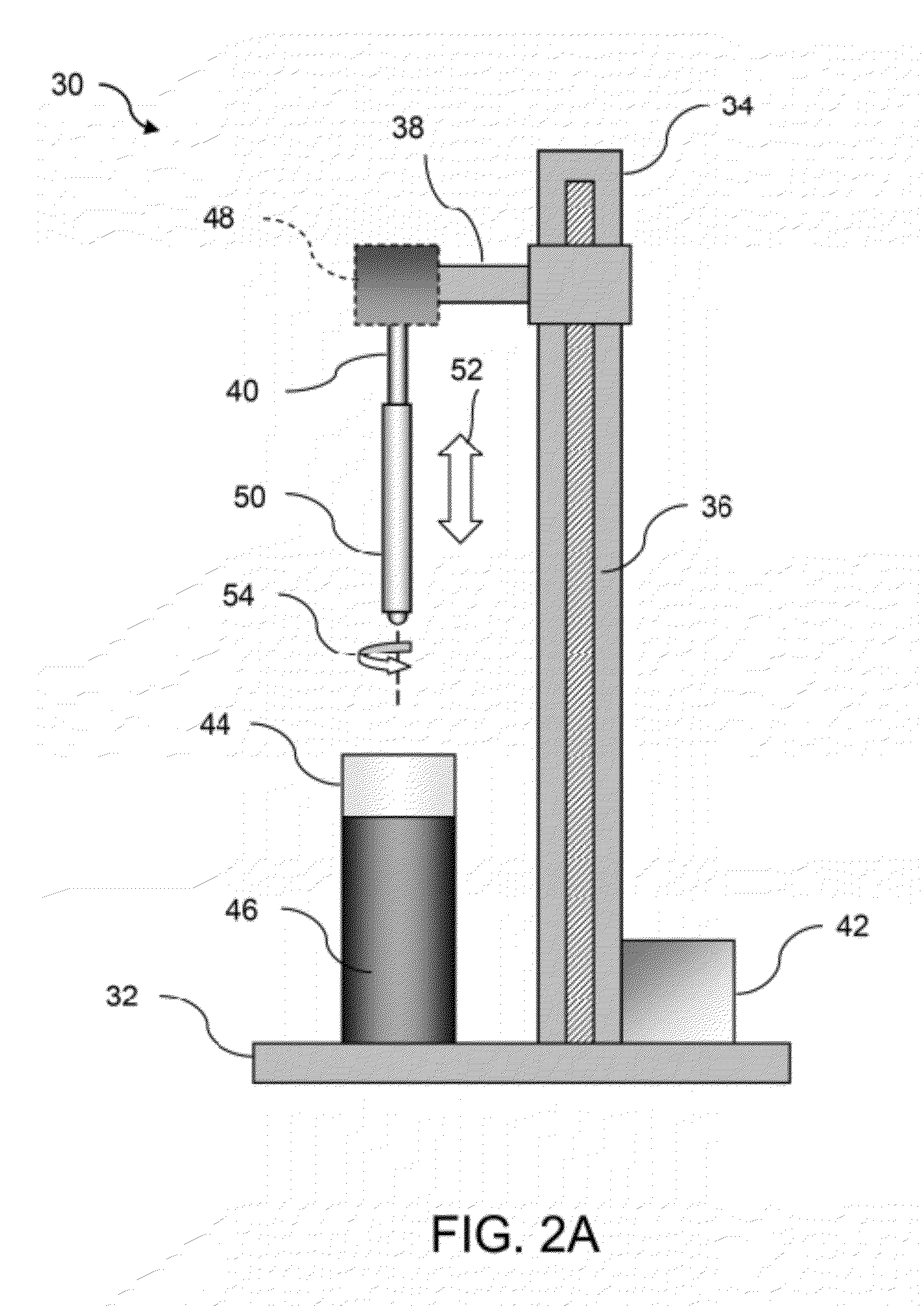Stent fabrication via tubular casting processes
a tubular casting and fabrication process technology, applied in the field of manufacturing processes for forming or creating devices, can solve the problems of reducing the mechanical properties of the formed substrate, reducing flexibility, and generally a transition from brittle to ductile failur
- Summary
- Abstract
- Description
- Claims
- Application Information
AI Technical Summary
Benefits of technology
Problems solved by technology
Method used
Image
Examples
Embodiment Construction
[0032]In manufacturing implantable devices from polymeric materials such as biocompatible and / or biodegradable polymers, a number of casting processes described herein may be utilized to develop substrates, e.g., cylindrically shaped substrates, having a relatively high level of geometric precision and mechanical strength. These polymeric substrates can then be machined using any number of processes (e.g., high-speed laser sources, mechanical machining, etc.) to create devices such as stents having a variety of geometries for implantation within a patient, such as the peripheral or coronary vasculature, eta.
[0033]An example of such a casting process is to utilize a dip-coating process. The utilization of dip-coating to create a polymeric substrate having such desirable characteristics results in substrates which are able to retain the inherent properties of the starting materials. This in turn results in substrates having a relatively high radial strength which is mostly retained th...
PUM
 Login to View More
Login to View More Abstract
Description
Claims
Application Information
 Login to View More
Login to View More - R&D
- Intellectual Property
- Life Sciences
- Materials
- Tech Scout
- Unparalleled Data Quality
- Higher Quality Content
- 60% Fewer Hallucinations
Browse by: Latest US Patents, China's latest patents, Technical Efficacy Thesaurus, Application Domain, Technology Topic, Popular Technical Reports.
© 2025 PatSnap. All rights reserved.Legal|Privacy policy|Modern Slavery Act Transparency Statement|Sitemap|About US| Contact US: help@patsnap.com



